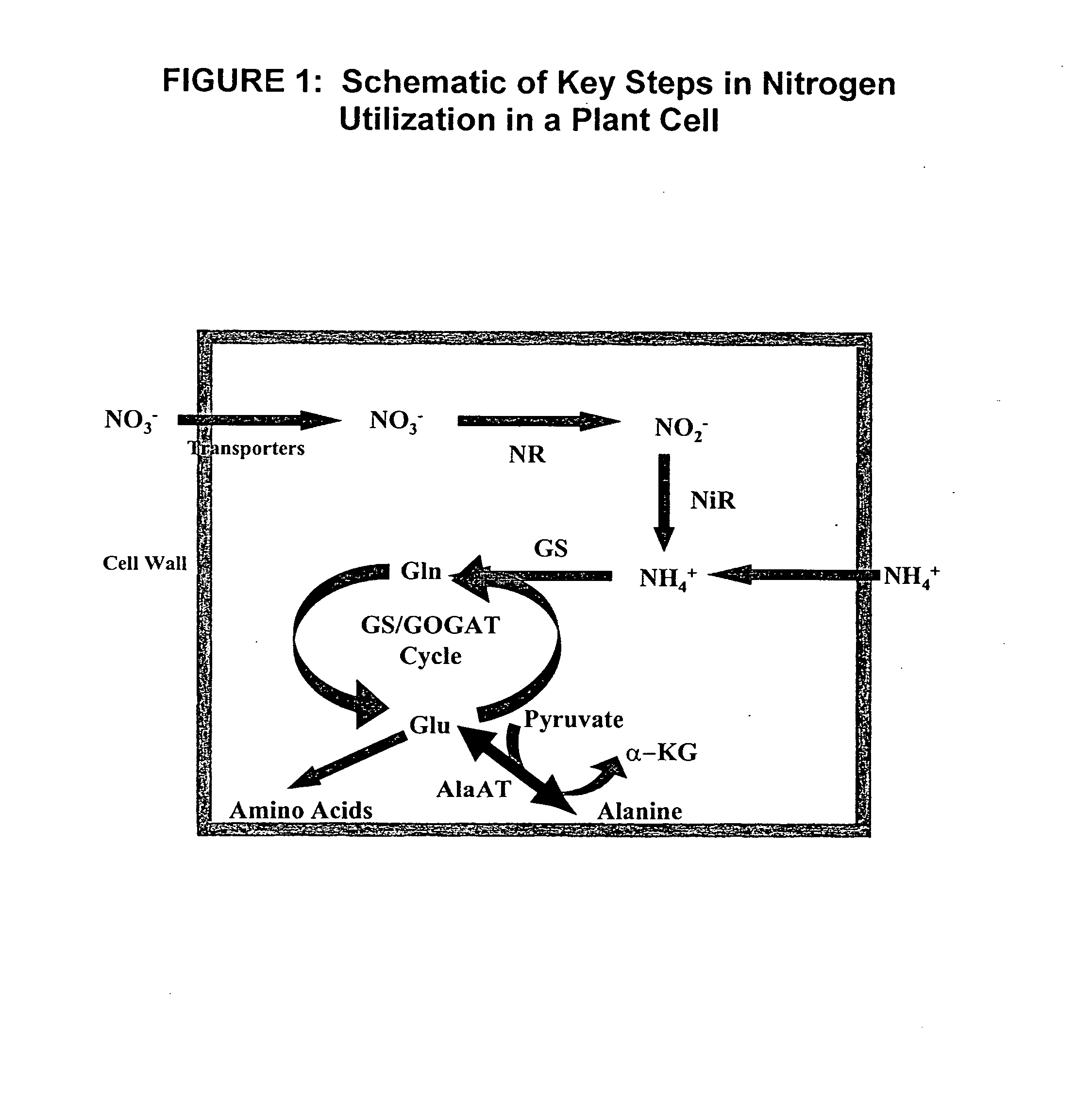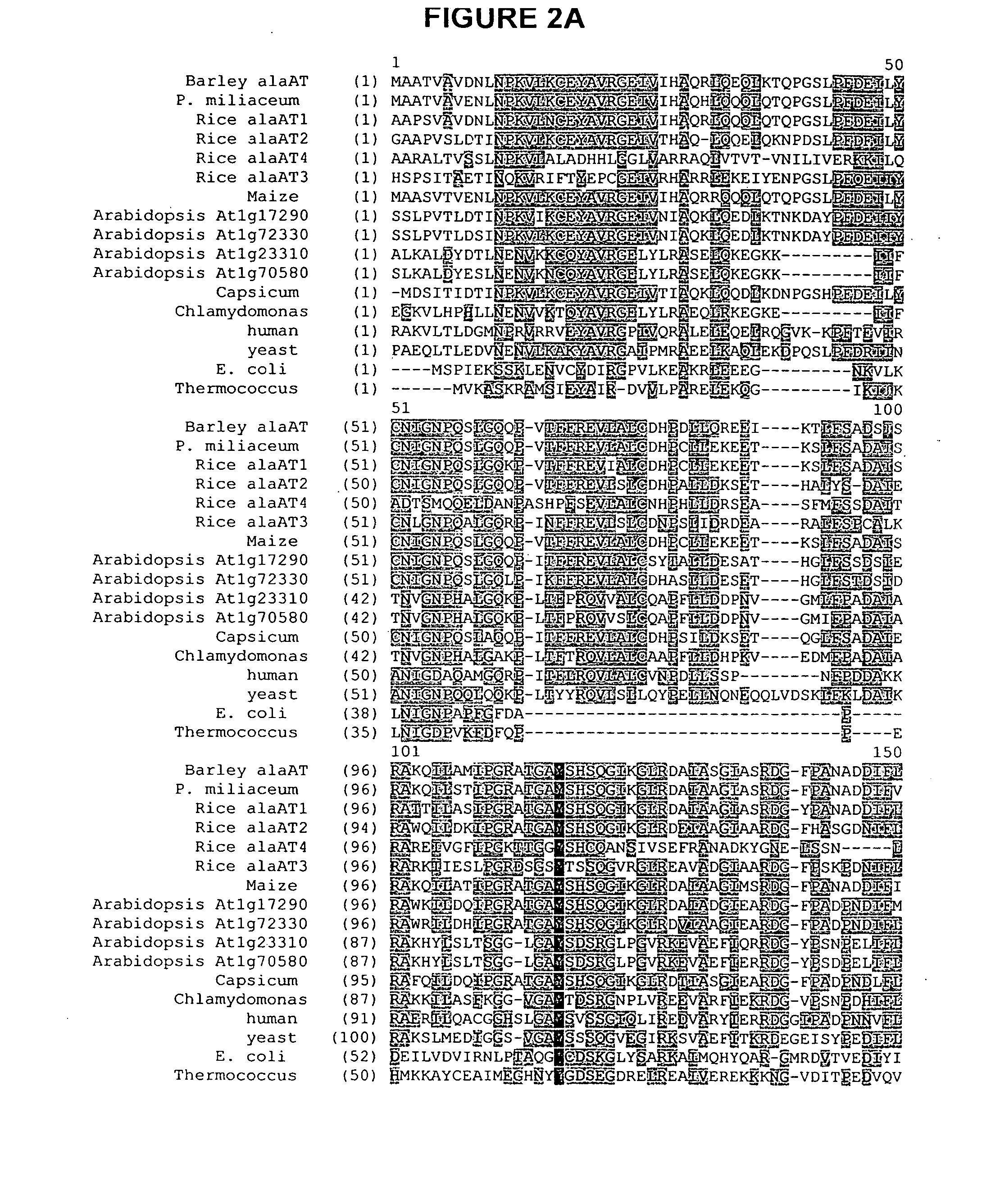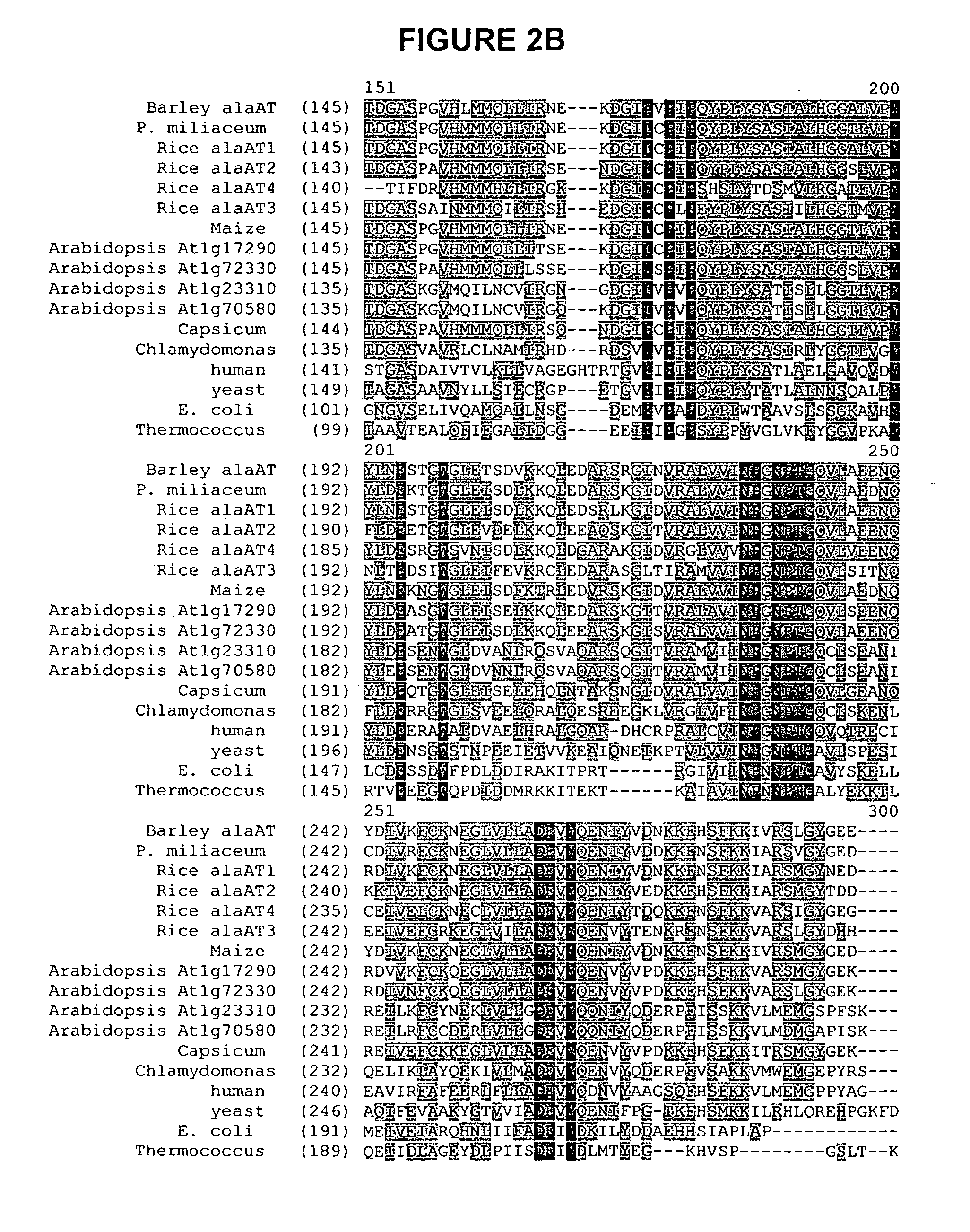Nitrogen-efficient monocot plants
a technology of monocots and plants, applied in the field of monocot plants, can solve the problems of affecting the environment, reducing the productivity of plants, and reducing the effect of nitrogenous fertilizer us
- Summary
- Abstract
- Description
- Claims
- Application Information
AI Technical Summary
Benefits of technology
Problems solved by technology
Method used
Image
Examples
example 1
Demonstration of NUE in Rice Expressing Barley AlaAT
Identification and Characterization of a Rice Antiquitin Promoter (OsAnt1)
[0086] The nucleotide sequence (bp 366-3175) of the btg26 gene (Stroeher et al., Plant Mol. Biol. 27:541-551, 1995; accession number S77096) was used to search the nucleotide database at NCBI using the blastn search tool. A rice sequence (accession number AF323586) was identified and this nucleotide sequence was used to search the TIGR Oryza sativa sequencing project (tigr.org / tdb / e2k1 / osa1 / ). The rice homologue of btg26, Oryza sativa antiquitin (OsAnt1), was identified on chromosome 9 of rice (accession number AP005570; 100216-91996 base pairs). A 973-bp sequence (nucleotides 101189-100216 of AP005570) upstream of the start codon of OsAnt1 is shown in FIG. 4 (SEQ ID NO: 1).
[0087] The sequence of the 403 bps upstream (5′) of the ATG start codon of the OsAnt1 gene was selected for further analysis. To determine if the sequence was likely to function as a ...
example 2
Demonstration of NUE in Maize Using OsAnt1 / Barley AlaAT
[0112] The OsAnt1-pro-AlaAT construct can be incorporated into suitable plant binary vectors for use in Agrobacterium-mediated transformation of maize. Many methods for transformation of immature embryos of maize using a variety of selectable markers are known in the art (Ishida et al., Nature Biotech. 14:745-750, 1996; Lupotto, Maydica 44:211-218, 1999; Zhao et al., Molec. Breeding 8:323-333, 2001; Frame et al., Plant Physiol. 129:13-22, 2002 and Miller et al., Transgenic Res. 11:381-396, 2002, U.S. Pat. No. 5,591,616. Contract production of transgenic maize plants is also available through facilities such as the Plant Transformation Facility, Iowa State University, Ames, Iowa.
[0113] Alternatively, the OsAnt1pro-AlaAT sequence can be used similarly in biolistic transformation methods for maize (Wright et al., Plant Cell Reports 20(5):429-436, 2001; Brettschneider et al., Theoret. Appl. Genet. 94:737-748, 1997; Gordon-Kamm et...
example 3
Demonstration of NUE in Wheat Using OsAnt1 / Barley AlaAT
[0115] Similar to maize, the OsAnt1-pro-AlaAT construct can be used for particle-gun bombardment transformation methods of wheat (Pastori et al., J. Exp. Bot. 52(357):857-863, 2001; Becker et al., Plant J. 5:299-307, 1994) or incorporated into suitable plant binary vectors for use in Agrobacterium-mediated transformation of wheat (Cheng et al., Plant Physiol. 115:971-980, 1997; U.S. Patent Application US2003 / 0024014A1) Other methods for wheat transformation are established in the art.
[0116] Wheat plants can be tested for NUE by measurement of biomass and seed yield during growth under various nitrogen fertilizer regimes including limiting nitrogen. Plant biomass can be fresh weight or dry weight, total plant weight, leaf weight or root weight. Suboptimal nitrogen conditions are those conditions in which nitrogen concentrations limit growth. Under such conditions, addition of added nitrogen such as fertilizer will increase gro...
PUM
| Property | Measurement | Unit |
|---|---|---|
| pH | aaaaa | aaaaa |
| Tm | aaaaa | aaaaa |
| v/v | aaaaa | aaaaa |
Abstract
Description
Claims
Application Information
 Login to View More
Login to View More - R&D
- Intellectual Property
- Life Sciences
- Materials
- Tech Scout
- Unparalleled Data Quality
- Higher Quality Content
- 60% Fewer Hallucinations
Browse by: Latest US Patents, China's latest patents, Technical Efficacy Thesaurus, Application Domain, Technology Topic, Popular Technical Reports.
© 2025 PatSnap. All rights reserved.Legal|Privacy policy|Modern Slavery Act Transparency Statement|Sitemap|About US| Contact US: help@patsnap.com



